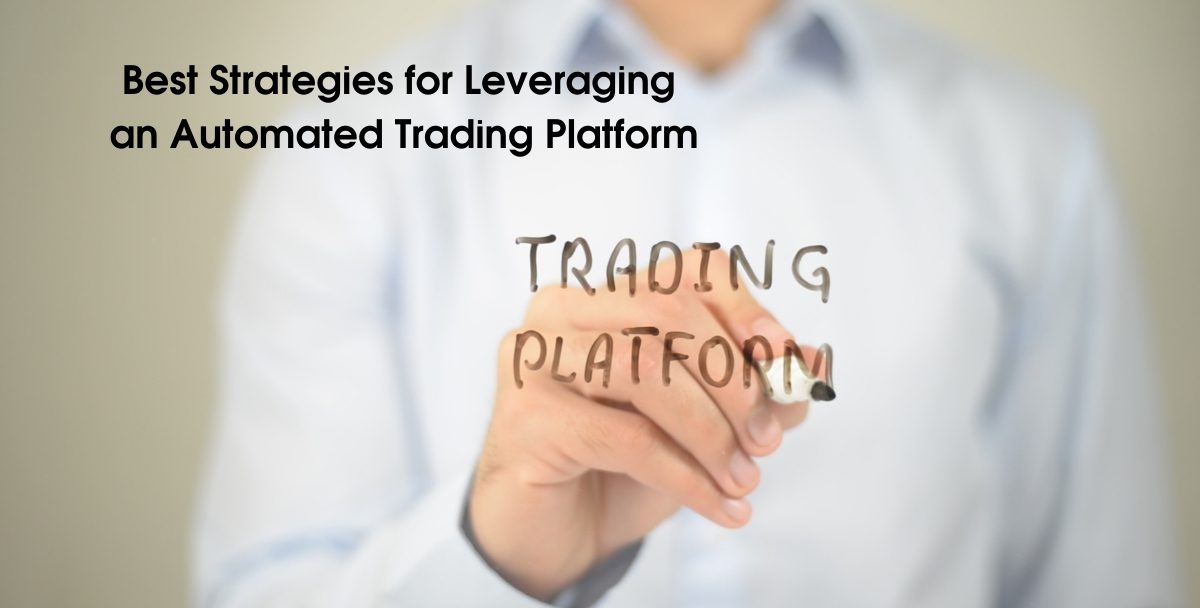Best Strategies for Leveraging an Automated Trading Platform

Trading is a high-risk, high-reward operation that demands real-time strategizing. A lot goes into making that successful trade, and all of it happens in fractions of a second to a few seconds at most. Delays mean lost opportunities and losses. It is of little wonder that automation has been incorporated to conduct trades everywhere.
Thank you for reading this post, don't forget to subscribe!An automated trading platform is a software tool that handles many of the tasks associated with trading, including buying the stock. While it may be an all-encompassing solution, there is still the human element involved. Inputs from brokers/traders ultimately drive the trade, which needs to have the best strategy to get the most out of these platforms.
Making the Best Buck, Automatically
Automated trading platforms come with a slew of functionalities and options to make the best use of them. It is up to the trader/broker to make the most of these and gain an advantage in the market. To do so, they must have strategies that will help them leverage the platform to the maximum extent. These need to be developed by considering a lot of variables and options available.
Minimal Latency
Many steps have to be undergone to make a trade finally. While the latest technologies in networks, systems, and algorithms might be extremely quick, they might still come up short in the intensely time-constrained trading field. And any delay, even the slightest, will mean a wrong calculation for trade or an opportunity lost altogether.
To overcome this, the delay or latency must be absolutely minimal, to the tune of microseconds. Some ways to make this possible are:
- Optimization of the platform itself to process data faster
- Locating the trading centre as close as possible to the exchange and internet service provider’s exchange
- Using the latest hardware for both networking and data processing
- Eliminating as many steps as possible, like direct trading with the exchange without using brokerage services, etc.
Every microsecond saved improves the chances of the automated platform, hitting that trade on the mark.
Using Real-Time Data
The world of trading is a very volatile one, with circumstances changing all the time rapidly. The strategy of using data that is hours or a day old will no longer work. The only way to win now is to gain the latest data about both market and company in real-time and use it to base your trades.
Automated platforms work by making a trade based on the desired criteria input by the trader/broker. If these criteria are not based on the latest data, it will result in an undesired trade.
The platform must thus have the ability to stream both markets and companies’ data directly into it, gain the same from an aggregator platform, or provide the ability to add such a feature post-purchase.
Find More: mt4
Customizing Your Platform
Automated platforms are designed with the most general of use cases in mind. Which is why many also provide the ability to add customizations according to the need of the customer? These customizations can be made available by the manufacturer utilizing add-on packages or added by the user through programming.
The best platform will provide the flexibility to use any popular programming languages like C++, Java, Python, etc. It will also allow many programs to be built and integrated so as to supplant or modify existing features.
Backtesting with Historical Data
Backtesting is crucial to the development of a suitable strategy to implement while trading. It gathers the past data of stocks and gauges the effect your current strategy has on them to explain how it will perform in the real world.
Any shortcomings can be addressed before it goes online into the automated platform. It also tests the ability of the platform to gather, assess, and process data, which will highlight its efficiency.
Multi-Market Performance
It is always best to diversify one’s portfolio. In the trading business, this extends to many companies and markets in the world. This widespread approach will actually reduce risk, as one market doing better can compensate for the poor performance of another.
This multi-market strategy means the platform must be capable of handling big data coming in from all over the world. It must be compatible with the protocols used by each exchange. The purchases, results, and analyses across markets can be had in real-time, making the platform a jack-of-all-trades.
Automated Trading Platforms are the greatest thing in trading since sliced bread. With the right strategy, they will work wonders for any trader/broker in any market for any stock, that too quickly and accurately.
